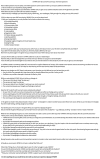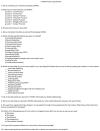A Nunavut community-directed Inuit youth mental wellness initiative: making I-SPARX fly
- PMID: 39388613
- PMCID: PMC11468022
- DOI: 10.1080/22423982.2024.2401210
A Nunavut community-directed Inuit youth mental wellness initiative: making I-SPARX fly
Abstract
Inuit youth in Nunavut (NU) are resilient but face a protracted suicide crisis. The SPARX serious game and e-intervention, developed originally in New Zealand, teaches youth cognitive behavioural therapy (CBT) skills to ameliorate stress and depression. Inuit youth in NU reviewed and culturally adapted SPARX and an existing wellness outcome measure for Inuit. One hundred and twenty-one youth, aged 13 to 24, across NU then tested, played, and evaluated I(nuit)-SPARX, showing improvement in several areas of wellbeing post-play. Youth completed a CBT skills survey, engaged in sharing circles to assess CBT skill retention, and shared their thoughts about the usefulness and cultural fit of I-SPARX with Inuit Qaujimajatuqangit (IQ). Communication Skills, Listening Skills, and Problem Solving emerged as the most helpful learned CBT skills, and NU youth provided real-world examples of using I-SPARX skills to support their mental wellness. Several principles of IQ were exemplified and upheld in the content of the adapted SPARX tool and the process of the project as a whole. Empirically grounded, asynchronous e-tools, developed in collaboration with Inuit communities to ensure cultural specificity, may support psychological wellness in communities where mental health resources are scarce.
Keywords: Community-based participatory action research; Inuit; adolescent health; cognitive behavioural therapy; mental wellness; serious games.
Conflict of interest statement
No potential conflict of interest was reported by the author(s).
Figures













References
-
- Inuit Tapiriit Kanatami [ITK] . Promising practices in suicide prevention across Inuit Nunangat; 2019. Available from: https://www.itk.ca/wp-content/uploads/2019/07/20190611-NISPS-ScanOfPromi...
-
- Kumar MB, Tjepkema M. Suicide among first nations people, métis and Inuit (2011-2016): findings from the 2011 Canadian census health and environment cohort (CanCHEC). Statistics Canada; 2019. June 28. Available from: https://www150.statcan.gc.ca/n1/pub/99-011-x/99-011-x2019001-eng.htm
Publication types
MeSH terms
LinkOut - more resources
Full Text Sources
Research Materials
